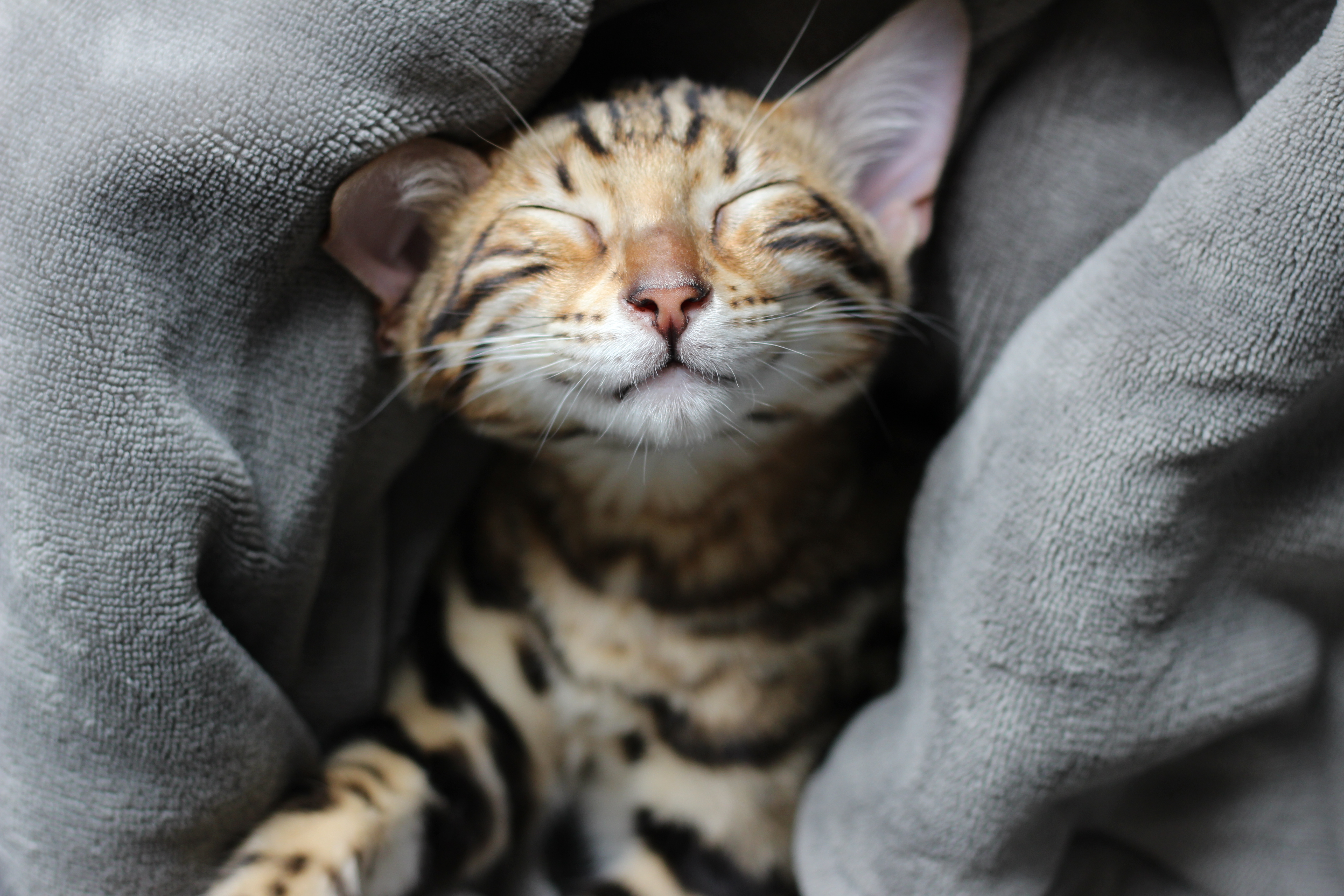How Cats Purr: Understanding Those Adorable, Vibrating Noises
Posted on Categories Discover Magazine

Cats are mysterious creatures. There’s a lot we don’t understand about them. Why do they sleep on our heads? Why do they almost always land on their feet? Why do they love boxes so much?
One cat mystery, however, may have been solved. A team of European researchers say they’ve found an answer to the question — how do cats purr — that has vexed science, and owners, for decades.
How Do Cats Purr?
Cats have an amazing vocal range, from high-pitched yowls and screeches to deep, resonant purrs. Most of these sounds are well understood, but purring has always been something of a mystery. Vocal cords (also known as vocal folds) are the bands of muscles in the larynx that make it possible to produce sound.
Sounds are made when air passes through these folds, making them vibrate. Low-frequency sounds are made when the vocal cords are longer, so larger animals with longer vocal cords can make deeper sounds. How relatively small domestic cats manage low-frequency purring has long baffled scientists.
Until recently, the most widely accepted idea was that cats made the purring sound by alternately contracting and relaxing the vocal cords about 20 to 30 times per second — a process that would be impossible without neuromuscular activity. This explanation called the active muscle contraction hypothesis or AMC, is based on measuring the electrical activity in the laryngeal muscles of cats while they purr.
Read More: Why Do Cats Always Land on Their Feet?
Testing How a Cat Purrs
However, a recent study led by Austrian voice scientist Christian T. Herbst and published in Current Biology found that the process is much more passive. Continual involvement of the brain is not necessary. Herbst and his colleagues removed the larynges from cats that had been humanely euthanized because of terminal illnesses. (The cats’ owners gave consent for the bodies of their pets to be used in this research.)
The researchers mounted each larynx on a tube that supplied heat and humidified air. In a delightful detail that you don’t often see in scientific studies (but I suspect it might be going on more often than scientists mention in their published papers), the researchers used a structure made of LEGO blocks to stabilize the larynx. They then pumped warm, humidified air through the vocal cords. All eight of the larynges produced self-sustaining oscillations in the frequency range of 25 to 30 Hz, typical cat-purring rates. In short, the cats’ larynges “purred” even with no active neural control.
(Credit:Impact Photography/Shutterstock)
Read More: 7 Fascinating Wild Felines That Just Might Make You a Cat Person
Results: the Muscular Contractions of Cat Purring
These results definitely called into question the AMC hypothesis, though the researchers are careful to point out that these findings do not rule out the possibility that active muscular contractions are involved when live cats purr; instead, they show that purring can occur without them, making it a good idea to revisit the AMC hypothesis.
LEGO blocks notwithstanding, these results didn’t explain how the process works without neurological involvement. However, the researchers proposed one possibility based on a unique anatomical feature of cats.
How Do Cats Really Purr?
Cats have layers of fatty tissue, called ‘pads,’ running along the interior edge of their vocal cords. While the researchers don’t know for sure that this is the mechanism involved, they say it’s possible that the pads increase the density of the vocal cords, making them vibrate more slowly, thus enabling them to produce a lower pitch even though the cords are relatively short.
The researchers say that this is not unlike “vocal fry” in humans (sometimes called “creaky voice”), a low creaky sound caused by slow vibrations of the vocal cords (and that, for unknown reasons drives some people nuts).
Now, if someone can just figure out what cats are looking at when they stare at a wall.
Read More: 5 Cats Who Owned Famous Scientists